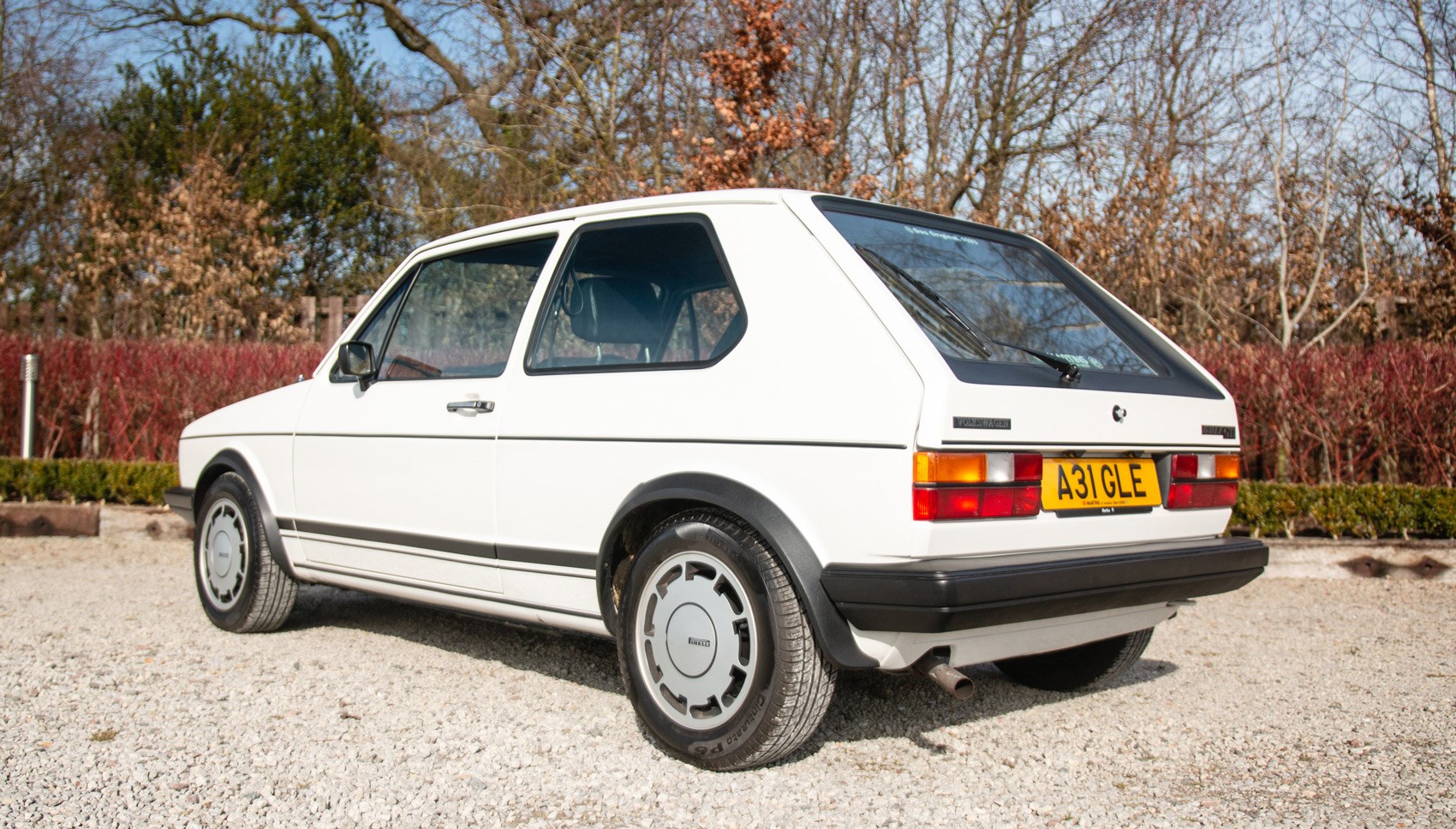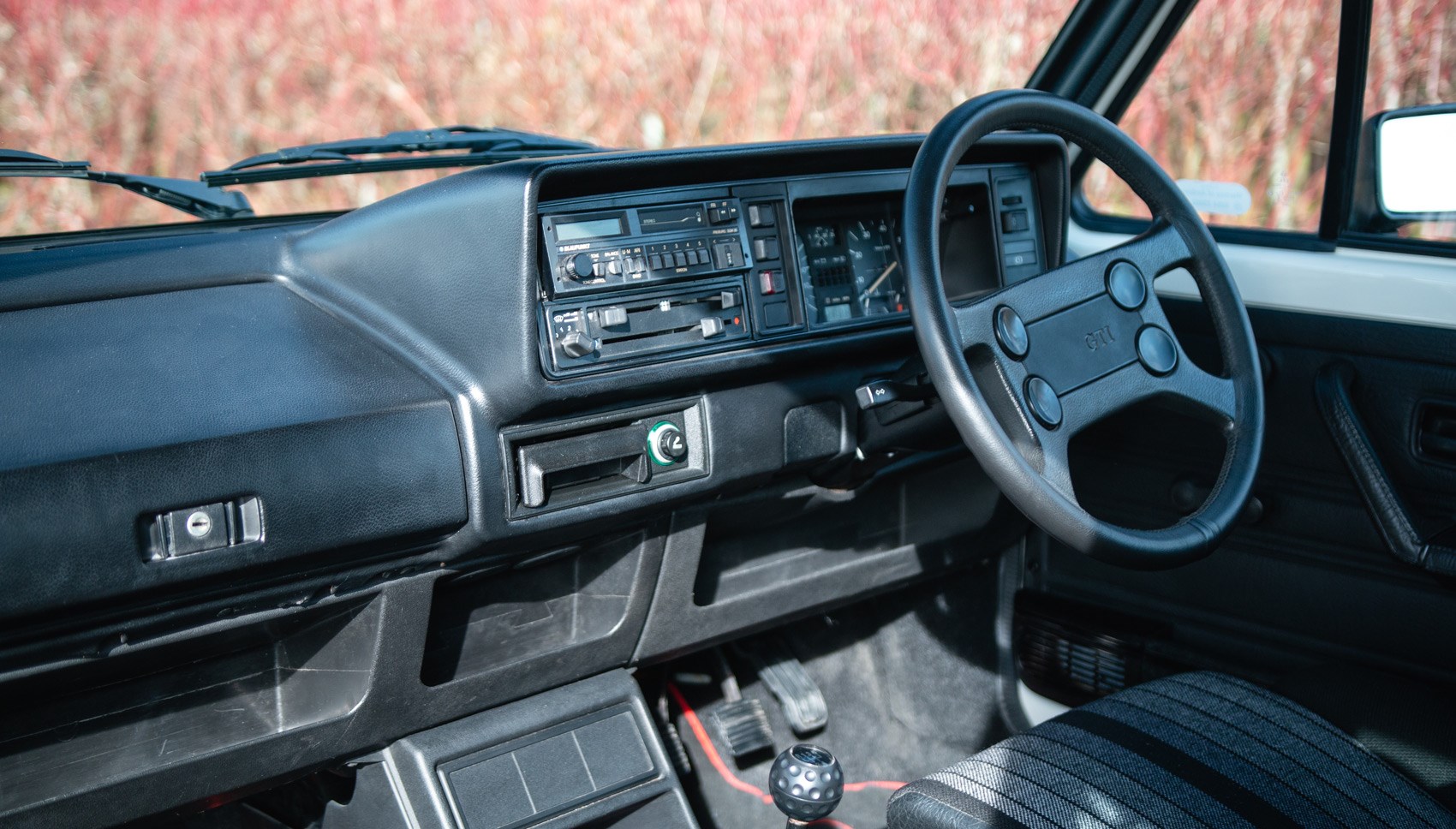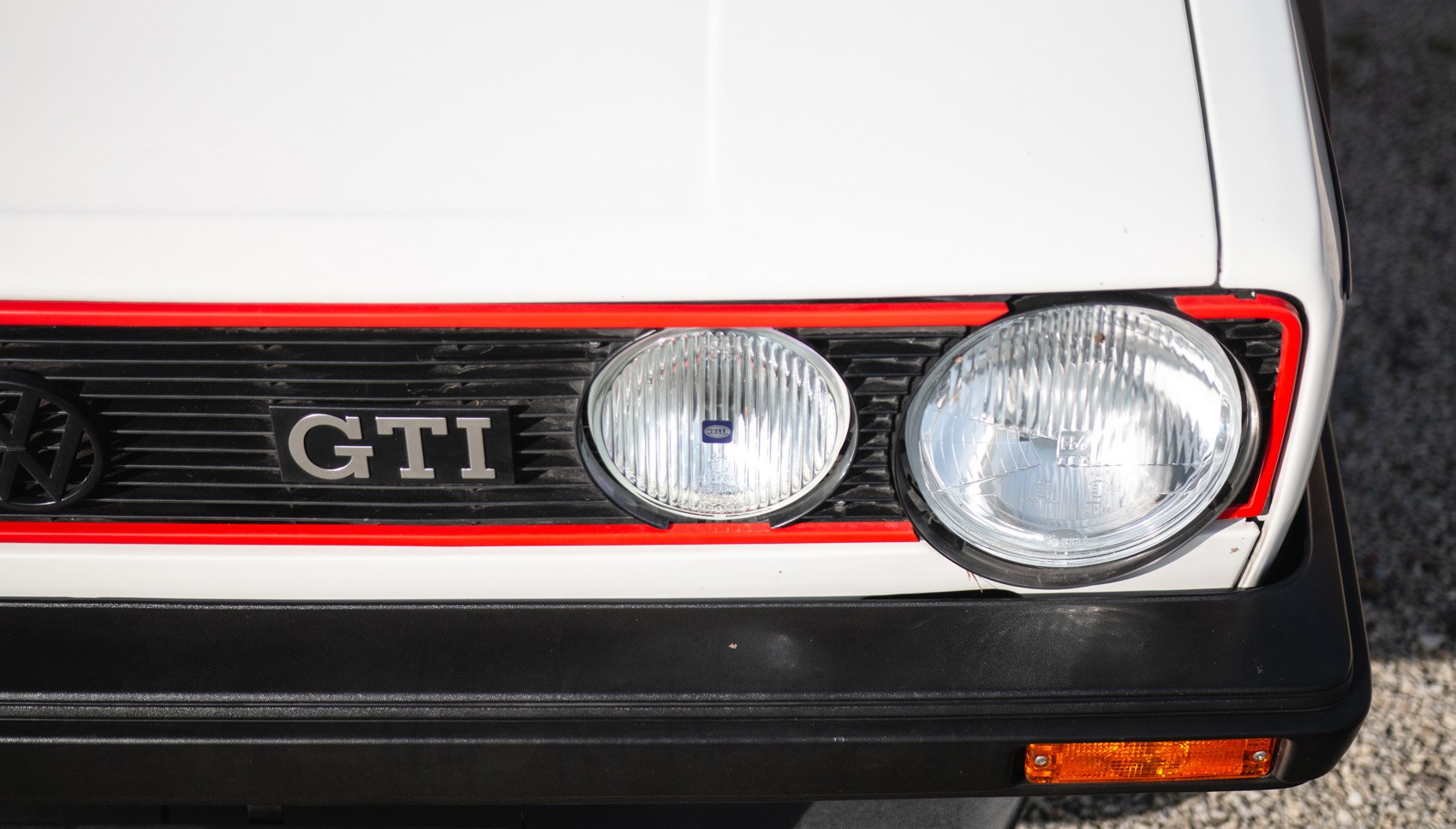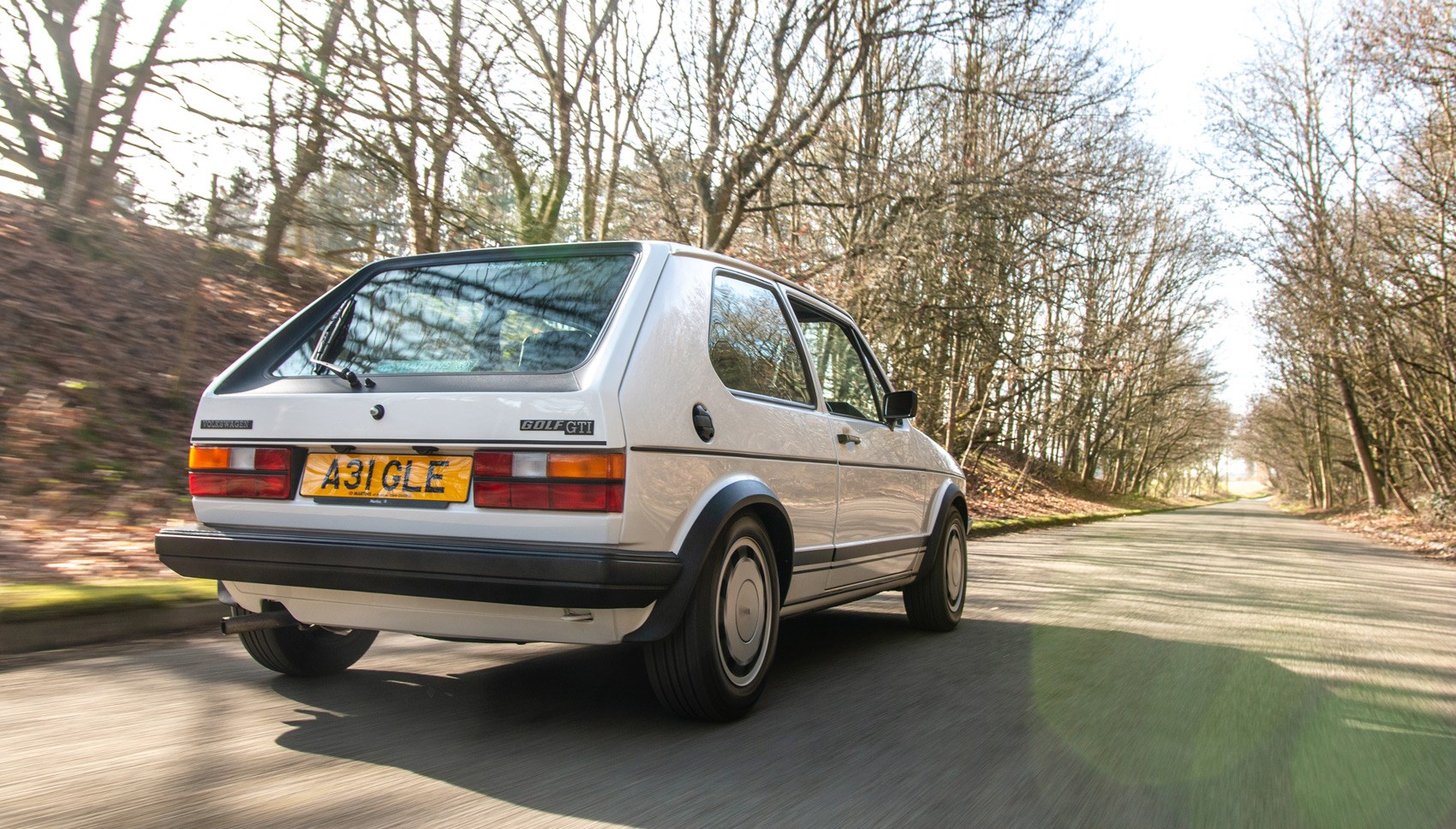► Mk1 Golf GTI driven
► Revisiting a hot hatch icon
► Run-out Campaign is cult classic
Go-faster stripes. Tartan trim. Power to the people. Here’s where the story starts. For the Mk1 Volkswagen Golf GTI, this 1983 Campaign edition was also how it ended: a last hurrah before the Mk2 arrived. Thirty-six years on, we have plenty to thank Das Original for. Can it live up to its legacy?
In truth, the Golf wasn’t the first hot hatchback – the Renault 5 Gordini trumped it by a matter of months – yet it defined the new breed. It also pole-vaulted into public consciousness like few cars before or since. Tell people today you drive a Megane RS or i30 N and most will stare back with glassy-eyed incomprehension. Even your Nan knows what a Golf GTI is.
The ‘Sport Golf’ was initially an after-hours project for a group of motorsport-minded VW engineers. After some arm-twisting, the suits in Wolfsburg sanctioned a limited run of 5,000 cars, yet this proved hilariously wide off the mark. From a standing start, GTI production rocketed from 50 a day to 500. By the time the Mk1 bowed out, some 460,000 had been built.

The GTI debuted at Frankfurt Motor Show in autumn 1975, although it was summer 1979 before the first right-hand-drive cars reached the UK. In a classic case of parts-bin pilfering, its 1588cc fuel-injected engine was a straight swap from the Audi 80 GTE. A four-speed manual ’box was mandatory, with an Autobahn-friendly fifth ratio added from 1979.
Speak softly, carry a big stick
At launch, some questioned the sanity of 110bhp in an 840kg hatchback. Zero to 60mph in 9.0 seconds and 112mph were startling stats in the mid-seventies, after all. But Volkswagen held its nerve, pointing out the GTI’s better brakes and sure-footed stability, at a time when most rivals were rear-wheel drive.
Suspension tweaks included stiffer springs and dampers, plus the addition of anti-roll bars. The car sat 20mm closer to the ground on 13-inch wheels (steels were standard, alloys optional). Braking was bolstered by a stronger servo and ventilated front discs, with drums retained at the rear. RHD cars were lumbered with a convoluted cross-linkage, though – more on this later.
Then as now, the GTI didn’t shout about its abilities. A subtle makeover comprised that signature red grille garnish, a jutting chin spoiler, sill-stripes, black window-surrounds (instead of the usual chrome) and plastic spats for the wider wheels. Inside, the seats were upholstered in jazzy ‘wear-resistant tartan’ and the gearknob resembled a golf ball. Those hilarious Germans…
A late-life update introduced a torquier 112bhp 1781cc engine from 1982. This also served the Mk2 – along with the Mk1 GTI Cabriolet, which remained on sale for a further decade. Production of the Mk1 hatch ended in 1983.
Crisper than Gary Lineker
James Bullen’s GTI may have a six-figure mileage, but flawless Alpine White paintwork and a cleaner-than-new engine bay tell a different story: one of ground-up restoration and hundreds of hours of hard graft. After today, its next outing will be in front of the judges at London Concours. I hardly dare get dust on the floor mats, let alone drive it. Still, needs must…
The original Golf is a textbook example of Giugiaro’s ‘folded paper’ aesthetic, which rejected voluptuous sixties curves for flat surfaces and crisp creases. Plain yet pretty, it has hardly dated – witness 2019’s derivative Honda e Prototype. Park alongside a modern car, though, and the Mk1 looks tiny. Its footprint is smaller than a present-day Polo.

The cabin feels spartan and a little dour, with a boxy dashboard, keep-fit windows and striped seats (‘Jacara’ tartan would not return until the Mk5 GTI of 2004). Its sole new-fangled feature is the ‘MFA’ trip computer, an LCD display that cycles through journey time, average speed, oil temperature, average fuel consumption and more when you prod the column stalk. Throw in the Blaupunkt cassette player and you have the mid-eighties answer to infotainment.
This Campaign edition is one of 1000 run-out models produced for the UK. Its über-cool Pirelli ‘P-slot’ alloys – shod with 185/60 R14 Pirelli rubber, natch – are the obvious visual giveaway. Buyers were also treated to a twin-headlamp grille, leather-wrapped steering wheel and green-tinted glass.
Confessions of a GTI fanboy
Before we disable the two-pronged immobiliser and slip the dimpled shifter into first, I have a confession: I’m a former Golf fanboy. I owned a string of Mk1 GTIs in my youth, back in the not-so-distant days when you could buy a good one for £1,500. Judge me an impartial observer if you wish, but I’m not blind to the GTI’s faults. Even if James’s car has fewer than most.
Let’s start with the negatives, then. Like any car of its era, the GTI isn’t immune to rust. And today’s mania for modern classics means you’ll struggle to find a solid one for less than five figures. An immaculate Campaign like this is probably nigh-on £30,000: on par with a new GTI Performance.

Also – spoiler alert! – on the right road, the Golf isn’t as much fun as a 205 GTI. But you already knew that, right? Nonetheless, while subsequent hot hatches added oomph and ASBO attitude, the Mk1 GTI isn’t the urbane elder statesman you might expect. It’s plenty more exciting than that.
Three wheels on my ’Wagen
Twist the dainty key and the engine adopts a strident, tappety idle. There’s no adjustment for the steering column, so my short legs demand a bolt-upright backrest that feels at odds with sporty driving. No matter: the soft seats are adequately supportive and spindly, pre-Euro-NCAP windscreen pillars offer superb visibility.
The unassisted steering feels workout-weighted at first. There’s some slack around the straight-ahead, and tight corners require lots of arm-twirling, but feedback is rich and organic. This, I remember, is how steering used to feel – hefty, fidgety and full of bite, like listening to vinyl after a compressed MP3. Gauging the level of grip is second-nature.
Barrel into a bend and the GTI will cock an inside rear wheel in classic hot hatch style. Lift off and it even starts to slide, although it needs more provocation than the snappy Pug. In general, though, a smoother approach works best: keep the engine in its sweet-spot and avoid unseemly understeer. Drive at eight-tenths and the Golf is smoother than synthpop, dispatching broken B-roads with a loose-limbed fluidity that modern hatches can’t match.
The long-throw gear lever also appreciates a steady hand, only loosening up slightly as the oil warms through. Thankfully, there’s no such reticence from the engine, which delivers zingy throttle response and a broad powerband. It sounds good, too: gruff and purposeful, yet never uncouth.

Only if you’ve experienced the fizzy, frenetic 1.6 does this later unit slightly disappoint. What the 1.8 gains in mid-range muscle – an extra 10lb ft of torque, served up 300rpm lower in the rev-range – is blunted by longer gear ratios. It’s a minor point but, for me, it means the Campaign isn’t the ultimate Mk1 GTI. I’d scour the classifieds for a 1.6 with the five-speed ’box.
The last word goes to those brakes: the Mk1’s notorious Achilles’ heel. The issue arises, at least in part, because of the lengthy linkage betwixt middle pedal and servo – a Heath Robinson workaround for right-hand-drive cars. When slack works into the system, the pedal feels mushy and stopping distance suffers. On a perfectly set-up car such as James’s, the brakes are up to the task. But I’ve driven (and owned) Mk1s that felt worryingly worse.
Volkswagen Golf GTI Mk1: verdict
You know how the story goes. The Mk2 rounded off the Mk1’s rough edges, then it lapsed into middle-aged malaise for the Mk3 and Mk4. The Mk5 was a triumphant return to form, the Golf’s upward trajectory continuing ever since. Today, ‘GTI’ is a brand, the badge that adorns a range of Volkswagens from the Up to Golf GTI Clubsport S. Yet everything harks back to the Mk1. It’s the archetypal hot hatch, and still an engaging, exciting driver’s car.
It seems apt to offer the last word to our former colleagues, from a CAR magazine long-term test published in October 1980: “For all the flexibility and manners of the engine, the Golf tends to make its driver aggressive. It feels like a little tiger of a car and, without you necessarily being the type who’d set out to dash through traffic and storm through bends, you’re liable to find yourself doing just that. If you like, the GTI is a boy racer par excellence.”
Check out our Volkswagen reviews